The 8800 / 8801 is the latest jewel in the crown of the world's largest mobile phone manufacturer Nokia. The device is high-end not in a sense of functionality, battery life or memory. The 8800 series is a high-end device in a sense of fashion and perfectionism.
In result of a careful market research, Nokia realized that there is a distinct group of consumer, for which price is not the main concern people that like Italian cars and Swiss watches. Recognizing the desires of this particular market, Nokia introduced so called premium series in 1998. The first model of those series was Nokia 8810 device with chrome finish and integrated antenna, one of Frank Nuovo's (Nokia's Chief Designer) many designs. The phone was advertised in any possible way and form starting with TV commercials, magazines and even giving away the 8810 to all the members of then very popular band Ace of Base.
The successor of 8810 the 8850 was introduced for the first time in 1999 and was similar in design and functions. The other device which can be considered part of the Premium series is the 8910/8910i which featured unique mechanism letting the phone glide-up from its titanium alloy shell.
On April 7th 2005, Nokia announced the latest device in the Premium series the 8800.
As soon as I touched the 8800, I realized that this is not a phone like any other. The first uniqueness of the phone is that its shell is almost entirely made of stainless steel except the top part of the back cover. Manufacturing it out of metal of course has increased the weight dramatically (134 grams), but ones you put the phone in your hand it feels extremely comfortable. Making it from steel was the right decision if it had been molded from a less heavy metal like aluminum or titanium alloy, the sense of durability created by the weights would have been lost. As with most stainless steel surfaces, the 8800 is susceptible to fingerprints when touched. The other important question was is the case scratch resistant? During my tests, I tried various sharp metal objects like keys, and staplers but I could not leave any visible scratch mark very impressive!
The only two keys functional when the 8800 is closed are the two in the front.
Special manufacturing technique such as Metal Injection Molding which is a process for forming objects, by heating the molding material to a fluid state and injecting it into a mold, were used to create them. Right between them is a non-functional key, which is pushed or pulled to erect/retract the phone. The whole key is perforated in tiny holes to make is slip-resistant.
Right above the keys starts the glass that covers the display. Here again Nokia engineers have used not regular glass, but special scratch resistant crystal usually used in higher-end watches. Even thought it is not Sapphire (the most expansive scratch-resistant glass), it still offers great protection against scratches.
Turning the phone over reveals almost ¾ of stainless steel back with the rest made of black plastic. I would have preferred the have 100% stainless steel phone, but I assume Nokia introduced some plastic to level the phone's weight. Another special technique called chemical etching was used to engrave the Nokia logo on the back cover. The model I had for this review was an early sample, so the back cover opening mechanism was not working properly (Nokia notified me of that). On the regular production units, you will have to gently squeeze the two push buttons located on each side of the headset to slide the cover open.
Under it is the SIM card holder, the cable connector and the new BL-5X Li-Ion 600 MAh battery. Due to the high counterfeit rate of batteries, Nokia started to put a special hologram sticker on its new batteries. The sticker also features a serial number, which can be authenticated online. The process actually allows you to authenticate battery only ones after that you will get an error message that someone else has already authenticated the battery.
To make the sliding action as easy and smooth as possible, Nokia utilized a bi-stable spring mechanism and stainless steel ball bearings. Because of the bistable (having two stable positions) design, the keypad slides in and out after you've pushed/pulled it about ½ of the way. The usage of ball bearings has made the sliding very smooth. What I didn't like (personal preference, not a design flaw) was when you close the slide, it makes a loud metal-on-metal knocking sound.
The phone's keypad is one of the few elements that in my opinion need to be improved. I have to note again that the device I had was a pre-production unit and some of the keys were almost not operable (like #3). The keypad starts with the TALK / END keys and a 5-way directional key-pad. The TALK/END keys are large and easily pressed, but the 5-way pad is way too small and very inconvenient. Since I got the phone I struggle to find the best way to press it, but even after several weeks of use, I am still not accustomed to it.
The actual keys are made of some type of plastic, which somewhat (at least for me) ruins the whole stainless steel experience. It would have been better if the keys were actually made also from some type of metal like aluminum. As I mentioned previously, some of the keys of my device are very hard to press. By very I mean REALLY hard. I am sure this is due to the pre-production nature of my unit. The rest of the keys are somewhat better, but still not very easy to press. Pressing any of the keys on the last row is not easy also the stainless steel cover is just below them and I had to use my nail to press them the thumb would only reach the keys above them.
The backlighting of the keypad is white and visible very well in all conditions.
When the phone is closed, both functional keys are not functioning. All you can do is to switch the profiles if you press the power button. Nevertheless, the phone has s key-guard function and also annoyingly asks me every time I close it if I want to lock the keypad. Lock it because
?
Since there the phone lacks any side-keys, the volume adjustment is done via the navi keys and unless you are very experienced with the phone, during conversation you will have to peek at the keypad to find the navi pad.
Behind the scratch-resistant glass is the 208 x 208, TFT display capable of showing up to 262,000 colors. Given the small dimensions of the phone, I think Nokia have chosen the perfect screen size. The brightness, contrast and colors are just immaculate and well visible in all lighting conditions.
|
|  Nokia 8800 Nokia 8800 |
| |
|  Nokia 8800 and Nokia 7610 Nokia 8800 and Nokia 7610 |
| |
The 8800 comes equipped with a SVGA 800 x 600 pixel resolution camera or about 0.5 mega pixels. Currently, this is the only phone that I know of that has such camera all the rest are eight 0.3 mega pixel one (VGA) or at least 1 mega pixel. The camera is positioned on the back of the slider and thus is protected when the phone is closed.
The power connector and headset jack are located on the bottom of the phone. Unfortunately, Nokia has decided not to include stereo sound support, so for the MP3-holics, you will have to listen in mono. Stereo playback is supported though via Bluetooth.
User Interface
The 8800 uses Series 40 Version 2 user interface. Different function can be assigned to keys of the Navi pad. Different functionality can be assigned to the right soft-key also. The left one is not assignable and always point to GO TO, when you access or create shortcuts to the functions you most often use. The Main menu can be viewed as a grid of nine icons, or a list view, where only one menu icon is shown.
Overall, as with most Nokia phone, the menu structure is consistent and easy to understand/follow. Even though the menu browsing is not slow, I would like to see it faster.
Messaging
The 8800 supports SMS, MMS, Instant Messaging and E-mail (POP3/IMAP). The phone supports the traditional multi-tap text input or T9 predictive text input. When using T9, the phone utilized a built-in dictionary and tried to guess which word you are trying to type, without you having to spell the whole word via multiple taps. In case there is a word that is not in the built-in dictionary, you will be able to save it and the word will be suggested in the future.
The 8800 does not support EMS, but you can use Nokia Smart Messaging, which allows you to add some black and white pictures (there are 10 built-in) to your SMS messages. The only problem is that not all phones support that functionality. The phone supports the sending of text messages beyond the 150 character limit for a single message. Longer messages will be sent as a series of two or more messages. Characters that use accents or other marks, and characters from some language options like Chinese, take up more space limiting the number of characters that can be sent in a single message. When you are ready with the message and want to send it, you can select a recently used number, single or multiple contacts from the phonebook, e-mail address or a sending profile. The concept of sending profiles is to be able to customize your Messaging Center number (the gateway to which a message is sent), delivery reports, message validity time, default recipients etc. After the message it sent, it can be viewed in the SENT ITEMS menu. Overall, the SMS functionality is very easy to use with excellent implementation.
A MMS (multimedia message) can contain text, sound, a picture, a calendar note, a business card, or a video clip. The phone supports multimedia messages that are up to 300 KB in size. The supported formats range from JPEG, GIF, BMP and PNG for pictures, MP3, AAC or AMR for audio and 3GP for video. The MMS, like the SMS is easy to use with no obvious problems.
The 8800 comes with POP3/IMAP client. The device I had was a pre-production unit and I could not setup the e-mail all e-mail settings were missing. The same was with the Instant Messaging also no settings were present so I could not test it.
The last feature of the Messaging menu is the Message counters, showing how many messages have been sent/received.
Phonebook
The internal phonebook can store up to 1,000 contacts. The actual number of contacts actually depends on the how many contact entries you have. You can store multiple numbers for each contact such as General, Mobile, Home, Office, Fax, or E-mail address, WEB page, postal address, User ID, Note, or Image. The latter is used as Picture ID shown when that contact calls you. What I did not like is that if you enter a new contact, you can only enter their name and one number. If you want to add like e-mail or second number, you have to search for the contact and edit it. I found this to be inconvenient. The first number that you save for a contact also becomes the default number. The phone supports Presence service or pretty much notification when you or the other party are busy, away, available etc. Presence is a Network service, meaning your Carrier must support it in order for it to work.
There two ways to speed up the dialing process Voice tags and Speed dial. Voice tags (calling) alloys you to record a short voice tag, and when you want to call that contact, simply press and hold for 2 seconds the Name soft-key, then say the tag and if a match is found, that contact will be called. Up to 10 voice calls are supported.
To use Speed Dial, you first assign a key to that contact. The key is between 2 and 9. Then to call that number, simple press that key and hold it for 2 seconds.
Up to 25 Caller Groups are also supported. The phone does not come with any pre-defined ones, so you will have to create them and assign contact to them. For those not familiar with caller groups, a good example is your friends and let say your parents. All your friends could be added to a group called Friends and special ring assigned to it. Then, if anyone from your friends tries to call you, you will instantaneously know that someone from your friends is trying to reach you.
I have always praised Nokia for their excellent PhoneBook feature set. The 8800 is not an exception. 1,000 contacts with multiple numbers per name, voice dialing, picture id, and groups are all excellent features all very well designed and organized.
Recent Calls (Call register)
The recent calls are divided into there options Missed calls, Received Calls and Dialed. When viewing any of those lists, you also see the date and the time of the call. Selecting a number from any of the lists allows you to add it to your contacts, calls it back, send a text message to it, or delete it. When the phone is in stand-by mode, you can press the talk key to invoice the Dialed numbers menu. Unfortunately, you still not change from Dialed to Missed or Received calls, like you can on a Series 60 device.
Setting
I'll go into details about each and every setting that can be tweaked. You can control pretty much everything from this menu:
- Profiles lets you personalize how your phone behaves in different environments by selecting settings
- Themes lets you personalize the appearance and sounds
- Tones customization of the sounds of the currently selected profile
- Display Wallpaper selection, screen saver, color schemes
- Date and Time
- My Shortcuts administer the shortcuts
- Connectivity Bluetooth, Packet data settings
- Call automatic redial, any key answer. There is also a new option called Audio Enhancing which according to the manual increases speech intelligibility, especially in noisy environments. Of course, I wanted to test is so I used my Logitech hand fan which we normally use to test the wind- suppression technique used in Bluetooth headsets. I was expecting that Nokia had employed some type of software algorithm to remove excess sounds. They still might have, but I could not find any difference with this setting activated or not when the fan was blowing towards the phone I still could not hear anything but the sound of the wind resistance.
- Phone Language, Memory status, automatic keyguard, security keyguard, Operator selection etc
- Security PIN code request, Call baring service, Fixed dialing, Access codes
Gallery
Gallery is menu for easy access to all your music, video, pictures, themes, recording or tone files. All files are stored inside folders like Images, Video Clips, Music Files etc. You can create your own folders and start storing files there.
As I mentioned before, Nokia 8800 is the first phone that I know of that uses SVGA camera. Most devices today are either VGA (low level models), 1 1.3 mega pixels (mid-range and some higher end models) and the latest are 2 and 3 mega pixel one. Currently, our Specs database has 25 models with camera of 2 mega pixels and above, 104 models with 1 mega pixel and above, and 205 models with only 0.3 mega pixels (VGA). Out of all those phones, our database has only Nokia 8800 with SVGA or 0.5 mega pixel camera. Even though pictures taken with the 0.5 camera of 8800 look definitely better then the 0.3 mpixel ones, there are still no match to the 1 mega pixel pictures taken with Nokia 7610. Pretty much I think it is just hypocritical to try to market and sell a Premium device for $700-$900 and just include 0.5 mega pixel camera.
Nokia 8800 Sample pictures:
The camera setting allow for 800x600 picture or 120 x 144 in portrait mode. There are three levels of compress/quality high, medium or basic. The same picture in high quality takes 78kb, 48kb when snapped in medium and only 34kb in basic.
Nokia 8800 Sample pictures in 3 levels of quality:
For comparison purposed I have taken the same shots with 4 different cameras: Nokia 7610 (1 mega pixel), Nokia 8800 (0.5 mega pixels), HP 6315 (0.3 mega pixels) and Canon A75, 3 mega pixel camera shooting in 0.3 mega pixel mode.
| Nokia 8800 | HP 6315 | Nokia 7610 | Canon A75 |
| | | |
| | | |
| | | |
| | | |
As seen from the sample photos, the 8800 actually performs very well for a SVGA camera. The colors are overall decently represented, with better focus then the ones from Nokia 7610. The night mode of the 8800 creates less noise also compared with 7610.
Sample pictures with Night Mode turned on:
|
|  Nokia 8800 Nokia 8800 |
| |
|  Nokia 7610 Nokia 7610 |
| |
With the media player you can view and play images, audio, video and animated images. Compatible streaming videos from a network server can also be viewed. The application is very simple and straight-forward select a file and listed to in via the speakerphone or headsets or view it. If you want play lists or equalizers, go to the next application in the media menu the Music player. In order to use it, you will have to download a music file using the Nokia PC Suite application. Given the good speakerphone quality, the sound reproduction is just excellent given that this is just a small cell phone. The sound can be routed also to your Bluetooth headset. What I liked a lot is that you can exit the Music player menu, and the music will still play in the background. If you go to the stand-by screen, the name of the sound will be shown. In addition, music player sports several pre-defined equalizer settings such as Pop, Rock and Jazz, plus two customizable ones.
Since the phone lacks memory expansion slot, the number of songs is limited to the available memory, which is about 42 Mb. If the average song is about 4MB, you can store about 10 songs total quite not enough for useful MP3 player use.
The sound recorder feature has been upgraded and now supports up to 1 hour audio recording. A one minute sound clip recorded in AMR format takes about 100 kb.
If you have a headset plugged in (which acts as an antenna), you can enjoy listening to the radio also. Up to 20 stations can be programmed.
Organizer
The 8800 supports the standard set of Organizer applications such as alarm, calendar, wallet, TO-DO list, calculator etc.
I have always disliked how over simplified was the alarm application on all Nokia phones. The newer models now at least feature recurrent rules, but you are still limited to only one alarm. In case you want to schedule an alarm for 8am and 12pm, you will have to actually edit the 8am one. The snooze time-out can be changed from 1 to 60 minutes.
The calendar feature supports up to 5 different note types meeting, call, birthday, memo or reminder. For every entry an alarm can be set. The calendar allows monthly or weekly views. Expired notes can be deleted automatically (after 1 day, 1 week or 1 month).
To-do list allows you to add short tasks that you have to complete and assign them priority and due date, plus setup an alarm when the due date comes.
Notes allow you to store entries up to 3000 characters long. If you want to store sensitive information, such as credit card numbers or access codes, you can do this with the Wallet application. The first time you access the wallet, you define the wallet code that protects your encrypted data. Then you can add encrypted data in the following categories: Cards, Tickets, Receipts and Personal notes.
Calculator, Stop-watch and countdown timer are also available.
Application
The 8800 comes with three pre-installed J2ME (JAVA) games Chess, Street Race and Golf Tour, plus three programs Translator, World Clock and Converter II.
The Chess allows you to play with another player via SMS or Bluetooth, or against the computer. Street Race is 3D racing game, which overall is boring and repetitive. The Gold Tour is also 3D but since I am not a golf fan, I can not comment on its entertaining value.
The Translator application is supposed to translate a word to French, German, Spanish and Italian. Unfortunately, the dictionary databases are very limited and only the most commonly used words are found. The Translator can not translate a whole sentence you will have to search the words one by one.
Web
The web browser support WAP 2.0 and you can view xHTML pages in addition to the WAP pages.
Connectivity
For short range communication, the 8800 supports only Bluetooth version 1.2 which has stereo sound support added. The discovery and pairing process was easy and
..
I tested the Bluetooth operation with Microsoft BT adapter, Jabra BT250, Plantronics M2500 and Logitech Freedom headsets and I was very pleased with the sound quality and range that I was able to achieve.
GPRS and EDGE high speed data are also supported. Since the phone was pre-production model, I would not setup the GPRS and test it.
PC Synchronization
Nokia PC Suite 6.5 is the latest version of the bundled software that comes with the phone. It is extremely easy to setup and allows you to connect the phone to your PC via Bluetooth or data cable. Once connected, you can synchronize your Contacts, E-mails, Notes and Tasks with variety of application including Microsoft Outlook and Lotus Notes. The Suite can also backup all the data from your phone, Install application, transfer music, create wallpapers and ringtones, view multimedia files on the phone, send text messages etc.
Performance
Measuring the phone's reception is of course subjective, but we have found some spots where the signal is very weak, so phones with weak reception usually garble the speech or completely drop the signal. In our tests, Nokia 8800 performed very well (like all Nokia phones) and was able to keep connected despite the weak signal.
The sound reproduced by both the ear-speaker and the loudspeaker was very true-to-life and clear. The volume of the ear-speaker was loud when put to the max, but the loudspeaker was a little low but still heard well from several feet when in a quiet environment.
Battery life was great also. In our test, the continuous talk time exceeded 4 hours and 30 minues, while the phone is only rated for 3 hours. With average talk time of 30-45 minutes a day, the phone should last for a few days without recharging.
Conclusion
The whole uniqueness of the phone is pretty much its design – true stainless steel shell, scratch-resistant glass, ball bearing slide mechanism. Aside from the super-premium (and price) Vertu series, currently there is no other device on the market to offer such display of status as the 8800. The phone is definitely a head-turner, but so it the RAZR. The difference between both is the RAZR is designed to be a high-end mass model, while the 8800 emphasized uniqueness and prestige. Unfortunately, besides the design, the 8800 does not offer anything more then a regular mid-range phone.
As always, if you are interested in becoming part of our review team, drop an email to: kidoborg@phonearena.com





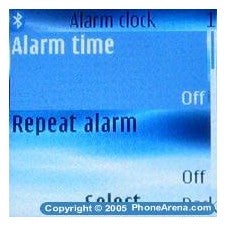




















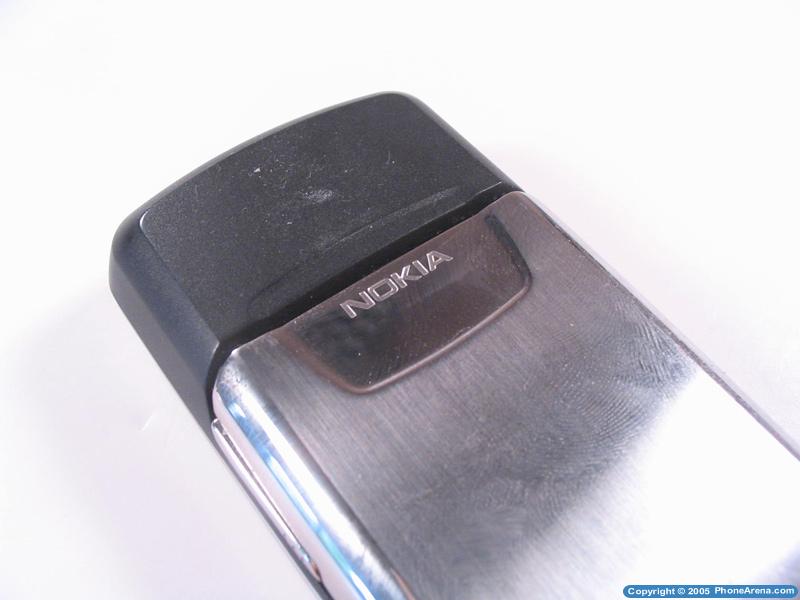
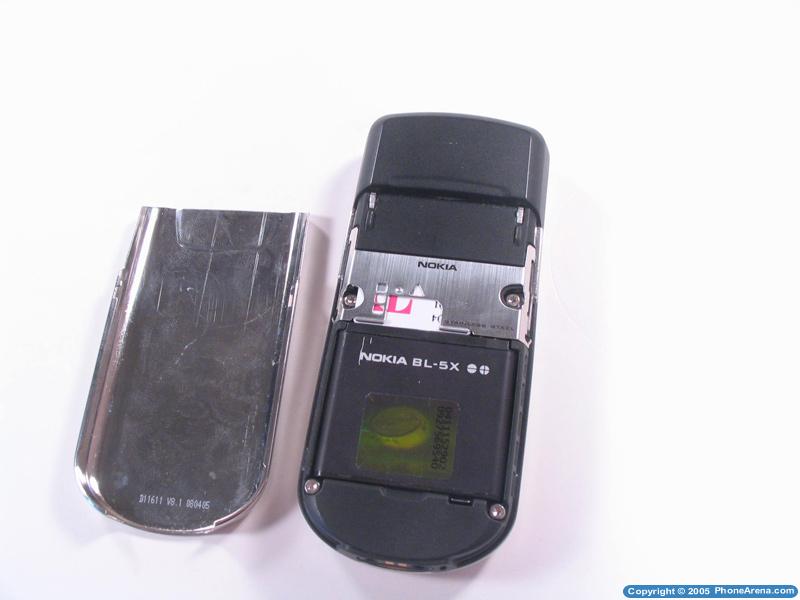




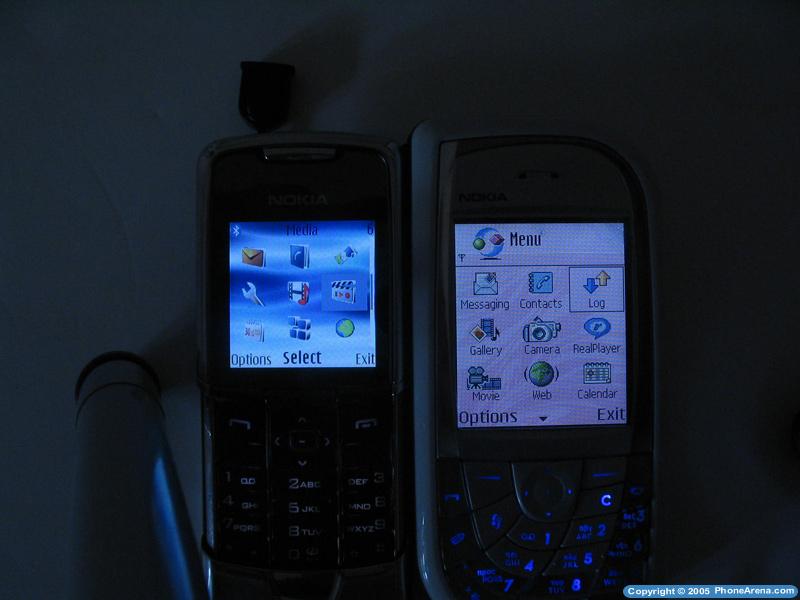







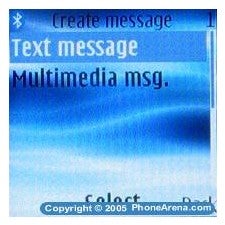


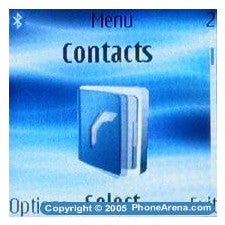

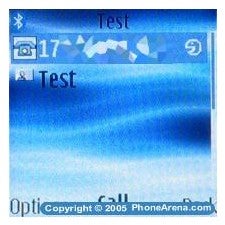

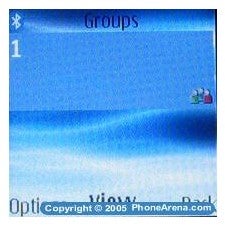

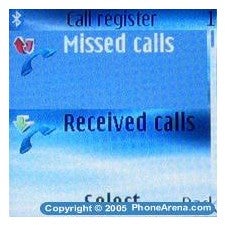

























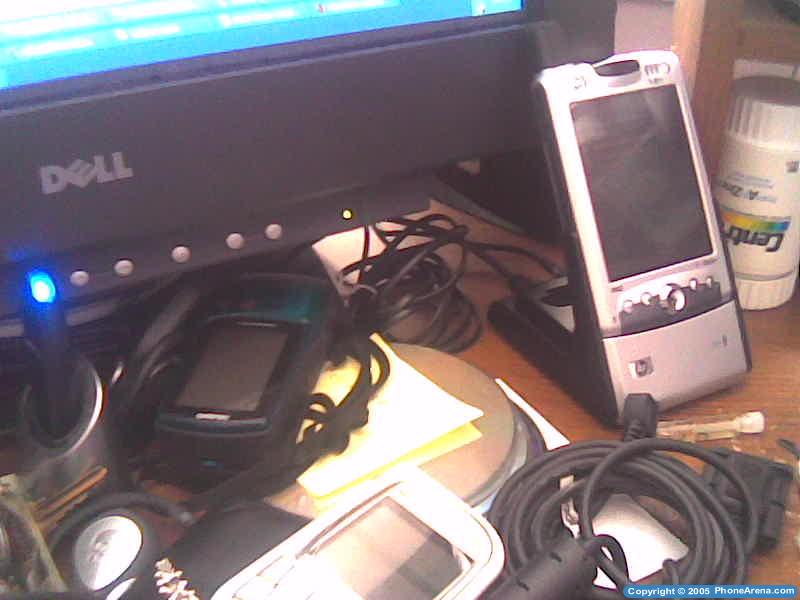


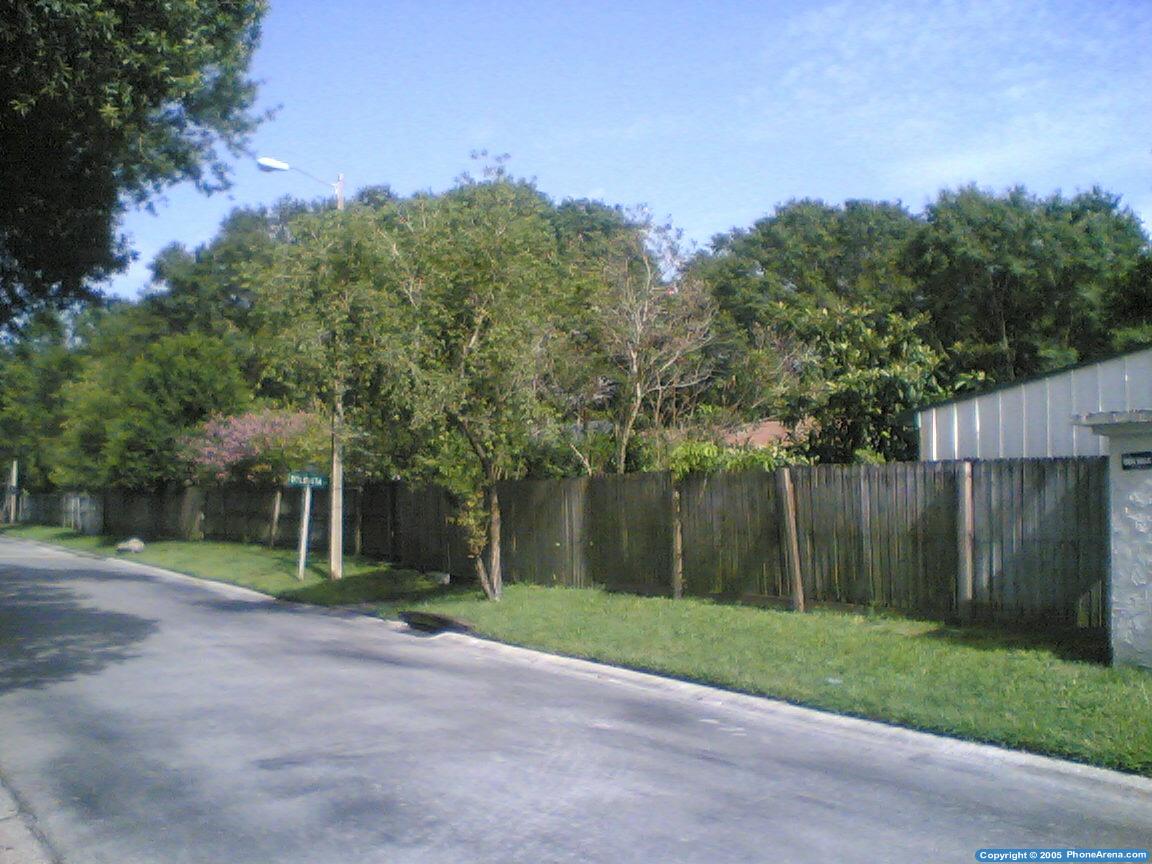
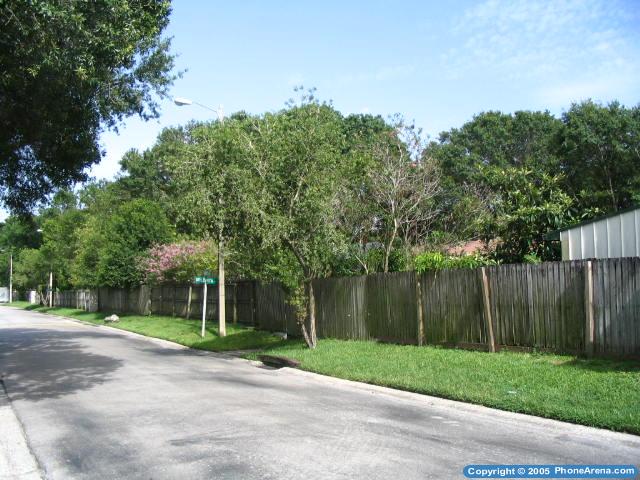






















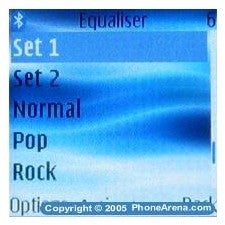



















Things that are NOT allowed:
To help keep our community safe and free from spam, we apply temporary limits to newly created accounts: